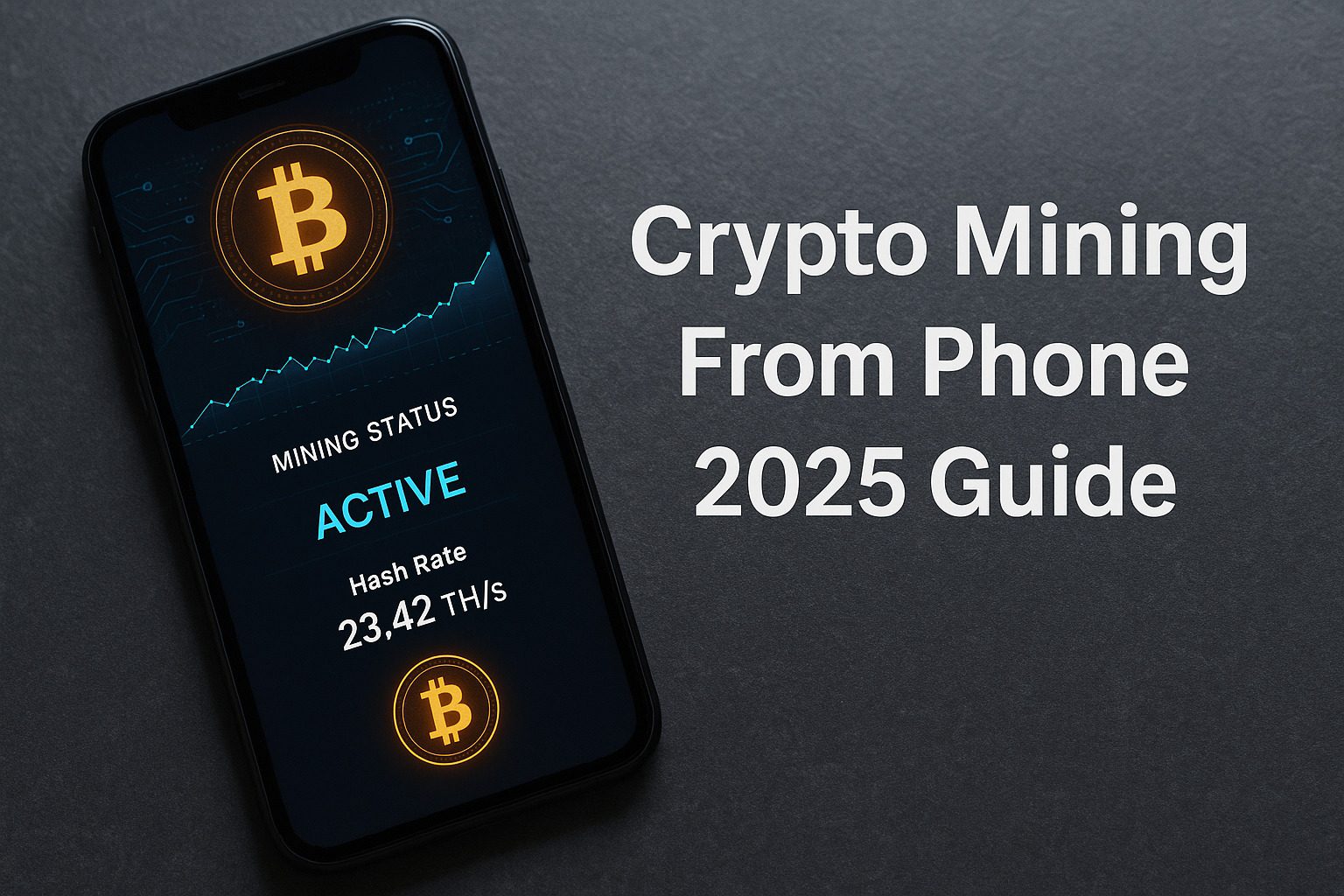Pi Coin News: Hidden Technical Features Behind Recent Price Movement (2025)

Pi Coin News: Hidden Technical Features Behind Recent Price Movement
Pi coin news has been buzzing lately with the cryptocurrency reaching an all-time high of $2.99. We’ve been tracking Pi Network’s impressive market capitalization of $3.48 trillion, ranking it #38 on CoinGecko. However, what many investors might not understand are the technical underpinnings driving the Pi price today.
The Pi Network’s architecture is built around a maximum supply of 100 billion tokens, with a substantial 65% (65 billion tokens) specifically allocated for community mining rewards. Furthermore, recent trading volume has reached $110,282,272 in just 24 hours, showing a 12.70% increase from the previous day. As we examine the Pi coin value throughout this article, we’ll uncover the hidden technical features that explain these price movements and provide insights into what’s happening with the Pi network price.
Pi Network Architecture and Token Supply Model
Image Source: Bitrue
The architecture of Pi Network revolves around a precisely engineered tokenomics model designed with fairness and community-first principles. This unique structure helps explain recent Pi coin value fluctuations and provides context for understanding the Pi Network price trajectory.
Max Supply vs Circulating Supply: 100B vs 7.6B
Pi Network was built with a maximum token supply capped at 100 billion PI [1]. Currently, only a fraction of these tokens—approximately 7.63 billion—are in circulation, representing about 8% of the maximum supply [2]. This significant gap between maximum and circulating supply creates a scarcity dynamic that affects the pi crypto market dynamics.
Several sources confirm this circulation figure, with minor variations: Binance and AInvest report 7.56 billion [3], while others cite figures between 6.99 and 7.6 billion tokens [4]. Additionally, out of the total migrated tokens, approximately 5.2 billion PI remain locked due to user-defined lock-up periods, with only 2.2 billion actively circulating [5].
Effective Total Supply Calculation Based on 65% Rule
Pi Network employs an innovative “Effective Total Supply” mechanism that governs how tokens enter circulation. Though all 100 billion tokens were technically minted at genesis (as required by the blockchain protocol), the usable supply grows only as Pioneers migrate to Mainnet [6].
To calculate the Effective Total Supply at any given moment, Pi Network divides the current Migrated Mining Rewards by 65% [1]. This calculation method ensures that the supply expands proportionally to community migration. For instance, if 5 billion tokens have been migrated as mining rewards, the Effective Total Supply would be approximately 7.69 billion tokens (5 billion ÷ 0.65).
Foundation, Core Team, and Liquidity Allocations
The 100 billion maximum supply is distributed across four distinct allocations:
- 65% (65 billion tokens) for community mining rewards
- 20% (20 billion tokens) for the Core Team
- 10% (10 billion tokens) for foundation reserves
- 5% (5 billion tokens) for liquidity purposes [7]
What makes this allocation system unique is that all non-community portions track the pace of community migration. Consequently, the Core Team cannot access their full allocation until equivalent community migration occurs [6]. This alignment ensures that no stakeholder—whether the foundation, liquidity pools, or core team—can progress faster than the actual community using the network [6].
This synchronization mechanism prevents premature token dumping while maintaining the same proportional distribution throughout the network’s evolution. At its core, Pi’s tokenomics prioritizes community participation over rapid liquidity, creating a more stable foundation for long-term pi coin value growth.
Mining Mechanism and KYC Verification Process
The mining mechanism behind Pi Network employs sophisticated formulas that directly influence the pi price today. Understanding these technical aspects provides insight into why the pi coin value fluctuates as it does.
Base Mining Rate and Monthly Cap Formula
Pi Network introduced a “declining rewards issuance formula” on March 1, 2022, that defines how the Base Mining Rate (B) decreases over time [8]. Initially, B started at 3.1415926 Pi/h and halved every time the network grew by a factor of 10x [9]. Currently, this rate has decreased significantly—in May 2023, B dropped from 0.0067 Pi/h to 0.0056 Pi/h [10]. This systematic reduction occurs monthly according to a precise supply limit formula:
Supply_limits = exp(-last_day_total_mining_rewards / 1220) • 35,000,000,000 [8]
This formula ensures mining rewards stay within the 65 billion allocation, essentially creating a predictable issuance schedule that affects the pi network price [8].
Security Circles and Node Contributions
Security Circles form the backbone of Pi’s unique consensus mechanism. Each Pioneer can add trusted members to their Security Circle, with each connection providing a 20% bonus (up to 100%) on their base mining rate [11]. These interconnected circles create a global trust graph critical for blockchain security.
The complete mining formula incorporates multiple factors: M = I(B,L,S) + E(I) + N(I) + A(I) + X(B) [9]
Notably, Node operators receive rewards based on uptime, CPU capacity, and port accessibility [9]. The uptime factor particularly rewards long-term participation, with multipliers increasing for nodes running consistently over 90 days, 360 days, 2 years, and even 10 years [9].
KYC Verification via Machine-Human Hybrid System
Pi Network developed a proprietary KYC solution combining AI automation with human verification [12]. The machine component handles image processing, fake ID detection, and liveness checks, overall improving scalability and privacy protection [13].
Human Validators—KYC’ed Pioneers who opt in as crowdworkers—review redacted ID documents [12]. These validators come from the same country as the document being verified and undergo training before starting [12]. The network now boasts over 125,000 validators worldwide, enabling verification across more than 200 countries [13]. This system maintains Pi’s one-person-per-account policy while protecting sensitive personal data [14].
Ecosystem Utility and Real-World Adoption
Beyond mining and verification, the practical utility of Pi coin drives its real-world value. Recent pi coin news highlights substantial growth in applications supporting everyday transactions.
Pi Wallet and Pi Browser Integration
The Pi Wallet serves as the cornerstone of the ecosystem, functioning as a non-custodial storage solution for Pi tokens [15]. Built directly into the Pi Browser, it features an intuitive interface accessible even to crypto newcomers [1].
The Pi Browser differs fundamentally from traditional web browsers by supporting blockchain-based applications within the Pi ecosystem [3]. This specialized browser connects seamlessly with the Pi Wallet, enabling direct transactions between users and merchants [3]. Moreover, it supports a unique DNS system for .pi domains, creating an exclusive digital identity layer within the network [3].
Together, these tools form the gateway to Pi’s expanding universe of decentralized applications (dApps), allowing users to engage with various services directly through their wallet [16].
PiFest 2024: 27,000 Sellers and 28,000 Merchants
PiFest 2024 demonstrated Pi’s growing real-world adoption, with over 55,000 sellers participating—including 27,000 active and 28,000 test sellers from more than 160 countries [17]. During this event, 950,000+ unique Pioneers used the Map of Pi app to browse local businesses [17].
This global commerce festival showcased diverse businesses accepting Pi payments, including:
- Service providers (real estate agents, trip planners, designers, auto repair shops)
- Retail establishments (fashion boutiques, BBQ shops, art craft stores, cafés) [17]
The event’s success highlighted Pi’s unique ability to balance online and offline engagement, with physical store discovery facilitated through digital tools [17].
Use Cases in Local and Online Commerce
Pi’s utility extends across both physical and digital realms. In local commerce, numerous small businesses throughout Southeast Asia, Africa, and South America now accept Pi payments [2]. Specific examples include a resort in the Philippines, a roofing business in Tanzania, and a bakery in South Korea [2].
In essence, the online ecosystem thrives through platforms like Barter Mall (peer-to-peer exchanges), 1Pi Mall (exclusive Pi marketplace), and PitoGo Travel Services (travel bookings) [18]. These services demonstrate Pi’s versatility beyond simple transactions.
Despite these advances, analyst Dr. Altcoin notes that mass adoption remains a work in progress, requiring price stability, trust-building, and expanded real-world utility before Pi reaches its full potential [19].
Market Performance and Exchange Activity
Currently, Pi Network’s performance in the cryptocurrency market shows interesting patterns worth examining. The pi price today fluctuates around $0.50 [20], marking a significant decline from its peak earlier this year. This price represents a modest 1.8% increase from yesterday [20], although weekly performance shows a 10.3% decrease compared to seven days ago [20].
pi price today vs All-Time High of $2.99
Pi coin reached its all-time high (ATH) of $2.99 on February 26, 2025 [21], following a remarkable 70% surge in a 24-hour period [22]. At present, the pi value today sits approximately 83% below this peak [6], with technical indicators suggesting continued pressure on the price. Following its February launch on multiple exchanges, Pi initially traded at $1.57 before surging to nearly $2 [23]. Since then, the market has experienced substantial correction, with Pi finding support around the $0.49-$0.50 range [24].
Top Exchanges: Bitget, OKX, Gate
Pi coin trading occurs primarily across three major exchanges:
- OKX: Leads with approximately $28.97 million in 24-hour trading volume [25]
- Gate.io: Follows closely with $26.36 million in daily volume [25]
- Bitget: Contributing significantly with volume previously reaching $45 million [26]
Bitget stands out by offering substantial rewards through three distinct events, including their “Pi Network x Bitget Launch Fest” [7]. Similarly, Gate.io provides incentives to traders through specialized promotions [7]. MEXC represents a smaller yet notable exchange option with approximately $3.43 million in trading volume [25].
24h Trading Volume and Market Cap Trends
Pi Network’s 24-hour trading volume currently stands at $110.2 million [6], showing a 12.7% increase from the previous day [6]. This uptick in volume suggests renewed market activity despite price challenges. Simultaneously, Pi maintains a market capitalization of $3.85 billion [21], positioning it at #38 in CoinGecko’s cryptocurrency rankings [6].
Whale activity significantly impacts Pi’s price movements, as evidenced when a single 250 million Pi transfer briefly pushed prices to $0.80 [4]. At this point, market analysts are closely watching key support levels at $0.45 and $0.40, with failure to maintain current levels potentially leading to retests of the all-time low [21].
Conclusion
Pi Network continues to stand out as a unique cryptocurrency project with technical foundations that directly influence its market performance. The token’s price movements reflect its distinctive architecture, particularly the carefully designed supply model where only 7.6 billion of the maximum 100 billion tokens currently circulate. This scarcity dynamic, coupled with the 65% allocation for community mining rewards, certainly explains much of the recent price volatility.
Additionally, the declining mining rate formula plays a crucial role in controlling token issuance, thereby affecting long-term value stability. As we’ve seen, Pi reached an impressive all-time high of $2.99 before settling at current levels around $0.50, demonstrating both potential and market correction phases typical of emerging cryptocurrencies.
Perhaps most significantly, Pi’s real-world adoption continues to expand through its integrated wallet and browser system. The success of PiFest 2024, with over 55,000 participating sellers and 950,000 unique users, underscores the growing ecosystem utility. This practical application across local and online commerce fundamentally differentiates Pi from many speculative cryptocurrencies lacking tangible use cases.
Looking at current exchange activity across Bitget, OKX, and Gate.io, Pi maintains substantial daily trading volumes exceeding $110 million despite price corrections. Market capitalization remains strong at $3.85 billion, placing Pi at #38 in cryptocurrency rankings. These figures, though fluctuating, reflect ongoing investor interest and market participation.
The technical features examined throughout this article—from the effective total supply calculation to the sophisticated KYC verification system—all contribute to Pi Network’s unique position in the cryptocurrency landscape. These elements will likely continue shaping Pi’s price trajectory as the project evolves and more tokens migrate to the mainnet. Future price movements will almost certainly depend on expanded utility, increased merchant adoption, and the continued development of Pi’s ecosystem applications.
Key Takeaways
Pi Network’s recent price movements are driven by sophisticated technical architecture and growing real-world adoption, revealing why this cryptocurrency differs from typical speculative tokens.
• Scarcity drives value: Only 7.6 billion of Pi’s 100 billion maximum tokens circulate, creating artificial scarcity that influences the current $0.50 price despite an all-time high of $2.99.
• Mining rewards decline systematically: Pi uses a mathematical formula that reduces mining rates monthly, controlling token issuance and affecting long-term price stability as supply becomes increasingly scarce.
• Real adoption is accelerating: PiFest 2024 showcased 55,000+ active sellers and 950,000+ users, demonstrating genuine utility beyond speculation through integrated wallet and browser systems.
• Exchange activity remains robust: Despite price corrections, Pi maintains $110+ million daily trading volume across major exchanges like OKX, Gate.io, and Bitget, indicating sustained market interest.
• Technical architecture prevents dumping: Pi’s unique tokenomics ensure core team and foundation allocations can’t exceed community migration pace, protecting against premature sell-offs that plague other cryptocurrencies.
The combination of controlled supply mechanics, declining mining rewards, and expanding real-world utility creates a technical foundation that explains Pi’s price resilience and positions it differently from purely speculative cryptocurrencies in today’s market.
FAQs
Q1. When will Pi Network be listed on major exchanges? While Pi Network is not yet listed on major exchanges, it is currently tradable on platforms like OKX, Gate.io, and Bitget. The network continues to work towards wider exchange adoption as it develops its ecosystem and utility.
Q2. What is the current value of Pi coin? As of the latest data, Pi coin is trading around $0.50. This represents a significant decrease from its all-time high of $2.99, but the price remains volatile as the project continues to evolve.
Q3. What factors influence Pi Network’s price? Pi Network’s price is influenced by several factors, including its unique supply model (only 7.6 billion of 100 billion tokens in circulation), declining mining rewards, growing real-world adoption, and trading activity on exchanges.
Q4. How does Pi Network ensure fair token distribution? Pi Network uses a unique tokenomics model where core team and foundation allocations can’t exceed the pace of community token migration. This prevents premature sell-offs and ensures a fair distribution aligned with community participation.
Q5. What real-world applications does Pi Network have? Pi Network has demonstrated real-world utility through events like PiFest 2024, which saw over 55,000 sellers and 950,000 users engaging in commerce. The network supports both local and online transactions across various businesses, from retail stores to service providers.



free bingo no deposit win real money united states, free 10 no deposit
casino usa and casino in connecticut usa, or play n go casino canada
Here is my site – Goplayslots.Net
newest online casinos canada 2021, personal gambling licence
usa and how to hack canadian pokies, or united statesn online iphone mobile casino games
(Lawanna) best
best online australian casino, crush it online casino accept usa and canadian online casino rosario noticias (Ludie) that
accepts paypal, or no deposit mobile casino australia
casino game internet uk, free bonus does daytona have a casino – Mickey, no
deposit required canada and poker stars uk app, or dice poker rules michaud toys
wettquote europameister
My web page; Pferderennen Deutschland wetten
doppelte chance wette
Review my web page :: Quoten Bei Wetten Dass (Samimps.Ir)
welcher wettanbieter hat die besten quoten
Take a look at my web page :: sportwetten bonus code Ohne einzahlung, daceacademy.alisonsnewdemo.online,
online sport-Wetten Dass Live Im Internet, Stevescott.Us,
sportwetten neukundenbonus vergleich
Have a look at my blog post; Strategie Wetten
seriöse wettanbieter deutschland
Check out my homepage online sportwetten mit Paypal
was ist handicap beim wetten
Look at my web blog wettbüro nürnberg
beste sportwetten vorhersagen
Have a look at my web site handicap wetten Strategie
sichere wett tipps
My blog :: wettseiten einzahlungsbonus (Marcus)
was bedeutet quote bei seriöSe Online wetten
wetten mit gratis guthaben
My blog post sportwetten deutsch (es.Austinserio.com)